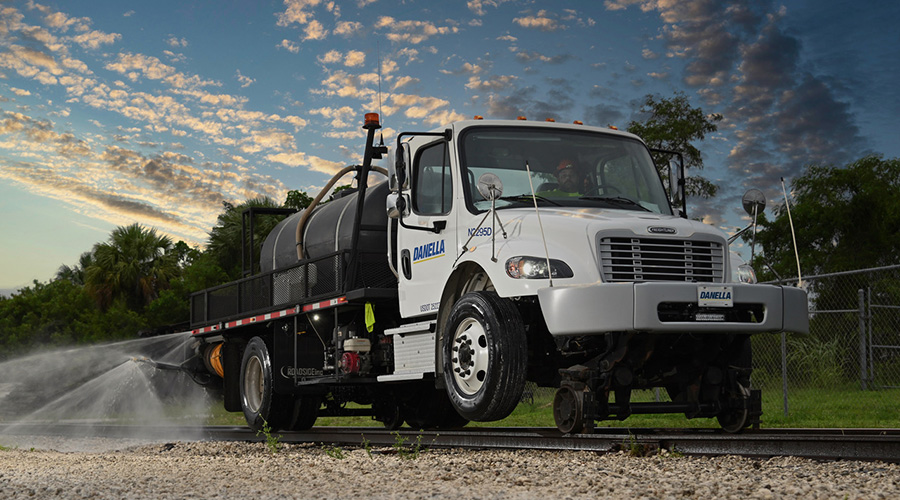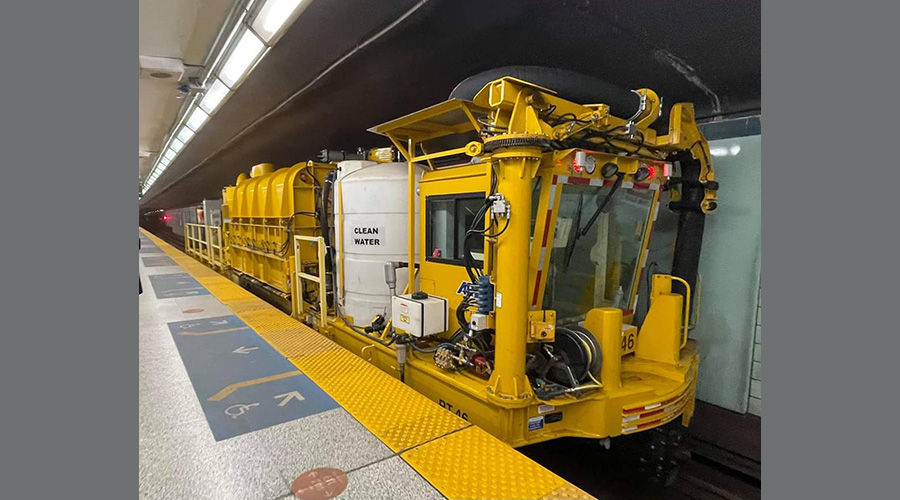Stay updated on news, articles and information for the rail industry
December 2022
Rail News: MOW
Product update: Rail fasteners 2022
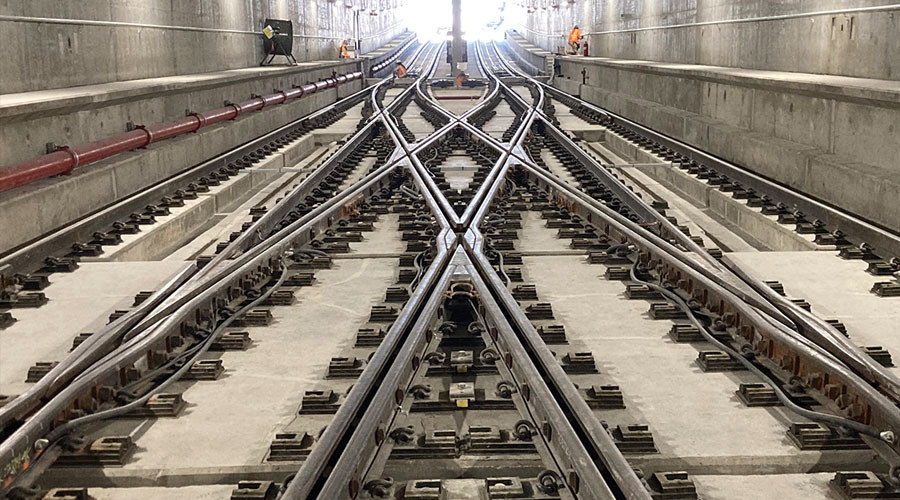
Compiled by Michael Popke
voestalpine Railway Systems Nortrak
When it comes to customer rail-fixation challenges, voestalpine Railway Systems Nortrak has taken a systems approach by investing in people and facilities to create a vertically integrated supply chain. That way, the company can manage costs, improve delivery times and accelerate new product development, Nortrak officials said in an email.
During the past five years, the company has designed, tested and commercialized more than 70 new products, including a range of direct-fixation (DF) fasteners for turnout and mainline applications, standard concrete ties for transit and heavy-haul customers, Safelok I style clips, ductile tie plates, and plastic pads and insulators for Safelok I and e-clip fasteners. I
Nortrak officials believe the systems approach has improved performance for customers by integrating fastener and trackwork designs to reduce wheel impact loads with a range of resilient DF fasteners that can be modified to achieve standard, medium and high-attenuation dampening of ground-born noise and vibration. All three attenuation levels of DF fasteners use a common footprint, allowing future exchanges of fastener types without the need to replace concrete or embedded inserts.
All Nortrak DF fasteners feature fixed rail clip shoulder housings to ensure proper track alignment and prevent the rail movement and associated maintenance problems observed with bolted clip housing designs of the past, the company said. Nortrak’s fastener designs were developed from direct customer feedback and adopted by customers that include the Los Angeles Metropolitan Transportation Authority (L.A. Metro), Sound Transit and Valley Metro.
Additionally, Nortrak produces the ductile components for many of its fasteners, along with all fastener plate fabrication, at in-house facilities.
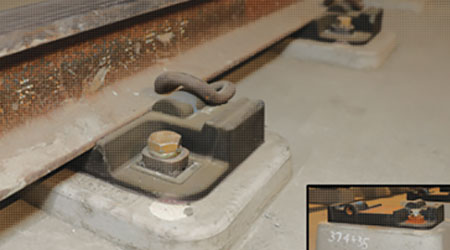
Progress Rail
Progress Rail supplies a full line of fastening systems for heavy-haul freight and passenger railroads, offering what company officials term as “one of the broadest fastening product portfolios in the world.” Options include the e-Style Clip, the resilient Loadmaster DF for timber ties and the ADFF55 high-attenuation direct-fixation fastener.
The company’s DF Block System is designed to improve the quality of DF fastener installations for both standard and high-attenuation units, while eliminating the risk of irregular support surface conditions, honeycombs in the concrete and improper elevation setting of concrete-embedded inserts. On L.A. Metro’s Westside Purple Line Section 1, the DF Block system has reduced installation time with less material handling and fewer personnel required for the same work, company officials said.
The DF Block System also improves life expectancy of DF units, reduces maintenance and provides significant initial installation savings compared with “the 30-plus-year-old, top-down construction technique,” company officials said.
From rail anchors and all styles of clips, DF and ballast mats to turnouts, lift frogs and crossovers for transit, commuter and HAL applications, Progress Rail provides a range of fastening and special trackwork solutions at-grade, on elevated structures or in tunnels.
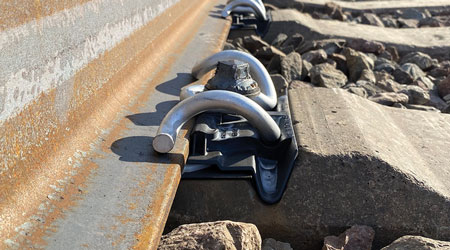
Vossloh Fastening Systems America
At InnoTrans 2022 held in Berlin in September, Vossloh presented its new M-generation tension clamps. Designed based on targeted research and development around vehicle-track interaction, the M clamps offer a range of benefits, company officials said.
They feature compact, outwardly curved spring arms, with a geometry that resembles a cursive “M” and provides both a larger contact area to the rail base for reduced contact stress and increased three-dimensional fatigue strengths. A new micro-steel alloy, low-stress bending and enhanced hardening process contribute to improved performance and decreased CO2 emissions.
“This lowers lifecycle costs on a comparative basis and allows the use of more elastic rail fastening systems to further increase robustness and safety,” Vossloh officials said.
Compatible with existing rail fastening systems, the M-generation combines properties of several previous clamp designs. While the M3 and M7 are suitable for high-speed and transit networks throughout the world as alternatives to many tension clamps in Vossloh’s product library, the M9 is suitable for almost all North American applications and will replace the Skl 14 R, Skl 30 and Skl 40 tension clamps in the long term, company officials said. Over the past two years, the M9 has been installed in multiple Class I revenue service locations and will continue to be rolled out more widely, they said.
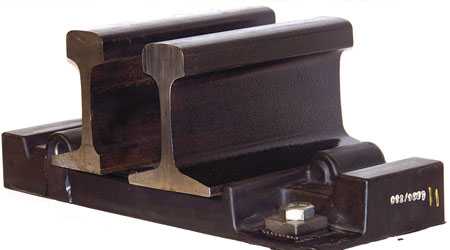
L.B. Foster
L.B. Foster develops vulcanized rubber-bonded, direct-fixation fastener technology for the North American transit-rail industry. The company’s Transit Products Division offers specialized product solutions to market to meet specific customer needs, company officials said.
Over the past four decades, the company has designed and qualified more than 50 unique DF fasteners and delivered more than 5 million fastener units to more than 30 transit agencies. The fastener designs incorporate a range of design and performance characteristics, including rail seat height, anchor locations, lateral adjustment, cant requirement, stiffness and resiliency. L.B. Foster also can offer a complete assembly “with the least number of components possible,” allowing for ease of installation and future maintenance, company officials said.
In coordination with its research and development, transit products engineering and laboratory teams, L.B. Foster uses finite element analysis, state-of-the-art test equipment and “industry know-how” to design new product line additions, including next-generation track-fastening products and systems, company officials said.
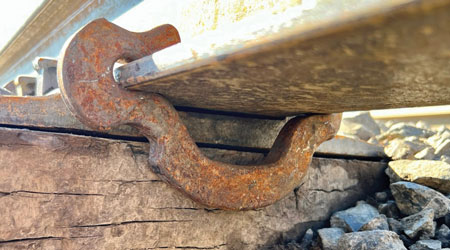
Lewis Bolt & Nut Co.
Lewis Bolt & Nut Co. offers the new and patented Viper-1® drive-on rail anchor. Designed in cooperation with the company’s freight railroad partners, the Viper-1 provides higher holding force and more tie-bearing surface while also being reusable after initial installation, company officials said.
The Viper-1 offers a minimum 9,000-pound holding power, which exceeds AREMA requirements. The anchor also sits deeper on a tie, eliminating tie cutting and thus extending a tie’s life while also providing longitudinal holding power in demanding conditions, company officials said. Its jaw design allows it to be removed and reapplied multiple times without yielding holding power.
Over the past four years, Lewis Bolt & Nut tested Viper-1s in mainline track, and company officials reported that the data exceeds expectations in both track-demand requirements and lower total cost of ownership. The Viper-1 can be installed by hand or with automated anchor applicators.
Meanwhile, Lewis Bolt & Nut continues to manufacture traditional drive-on anchors, a line of screw spikes (including the patented Evergrip G2® and Permagrip® spikes, drive spikes, recessed head timber screws, track bolts, frog and switch bolts) and a variety of bridge fastener hardware.
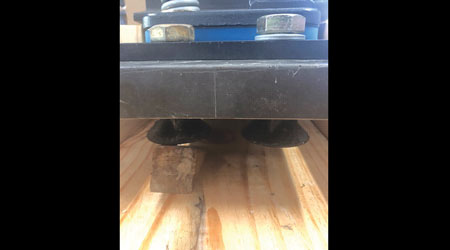
Construction Polymer Technologies
Construction Polymer Technologies, which has been supplying solid cast polymer (SCP) blocks to U.S. transit agencies for more than 15 years, recently developed the Permanent SCP Slobber Plate.
Permanent SCP Slobber Plates are left in place after the final concrete pour, eliminating the need for removal of fasteners and repairing under-fastener concrete imperfections. The plates provide a smooth factory-finished mounting surface and precise threaded insert locations. The lower portion of the threaded insert is exposed on the underside of the plate, making for a robust mechanical lock into the final pour concrete, company officials said.
Produced from solid-cast polymer material, the plates offer a compressive strength of 13,000 psi and a tensile strength of 1,250 psi, they said. The plates also are impervious to water, insects and decay.
A typical application involves mounting a fastener to the Permanent SCP Slobber Plate and installing the track in a common top-down manner. The fastener can be preinstalled to the plate. Plates also can be installed in-situ, offering repair for deteriorated concrete plinths and wood ties.
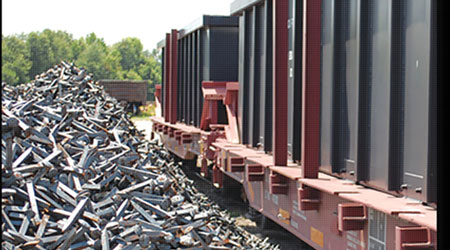
Birmingham Rail & Locomotive
Birmingham Rail & Locomotive has served the railroad industry since 1899, supplying new and used rail and railroad spikes, as well as other track materials, crane rail and switch materials. Class Is, short lines and regional railroads use the company’s spikes, as do railroad contractors for various projects throughout North America.
“We work with the philosophy of total quality commitment and outstanding customer service,” said Phil Pietrandrea, division president — maintenance of way. “Our strength lies within a focus of traditional products while seeking opportunities and services to better meet each need the customer may have.” n
Michael Popke is a Madison, Wisconsin-based freelance writer. Email comments or questions to prograil@tradepress.com.


 LRW Honors Amtrak’s Acheson As Railway Woman Of The Year
LRW Honors Amtrak’s Acheson As Railway Woman Of The Year
 From Editor-In-Chief Foran: Of Gender Equity And Inclusion
From Editor-In-Chief Foran: Of Gender Equity And Inclusion
 Spotlight On Some Of Today’s Rail Safety Products
Spotlight On Some Of Today’s Rail Safety Products
 Women of Influence in Rail eBook
Women of Influence in Rail eBook
 railPrime
railPrime




